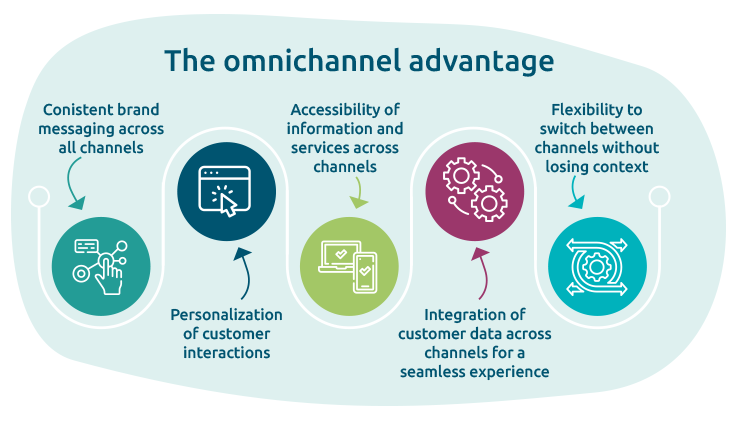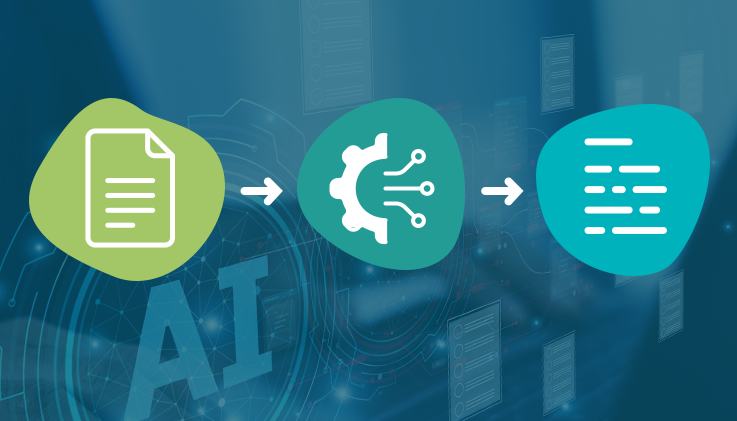Meeting customers where they are is no longer a luxury but a business imperative. In today’s customer-centric landscape, an omnichannel strategy plays a critical role, enabling seamless interactions across every touchpoint. This connected experience is essential for building lasting loyalty and fueling business growth.
Beyond enhancing traditional customer support, omnichannel helpdesk software integrates diverse communication channels to unify customer interactions across touchpoints and synchronize organizational workflows, setting a new standard for comprehensive, efficient customer experience management. By centralizing communication channels—from traditional voice support to digital interactions across email, chat, and social media—businesses can enhance customer satisfaction and optimize their customer support workflows. Built-in AI enhances customer interaction across channels, offering a competitive edge over enterprises that still provide legacy customer support.
Omnichannel is the way to communicate
Most modern businesses deliver customer support by meeting customers where they are. This approach is crucial for delivering the exceptional service they expect. Omnichannel customer helpdesk software strives to integrate multiple channels, ensuring a cohesive experience. Here are some of the most common channels.

- Email: Due to its versatility and efficiency, email remains an indispensable communication channel for businesses. It offers a cost-effective, asynchronous method of reaching a broad audience, allowing for both mass communication and personalized interactions. Emails can be easily archived and recovered after a quick search, providing a valuable record of correspondence. Additionally, email integrates seamlessly with other digital tools, enhancing the productivity and collaboration of your customer support teams. Its widespread adoption ensures that most individuals and organizations have the necessary infrastructure to utilize it effectively.
- Social Media: Social media has evolved from being a supporting player to a mission-critical component for brands and support teams. Social media channels can be accessed conveniently from mobile phones, making them one of the easily accessible communication channels for your customers. Your customers’ proximity to social media channels is likely greater than that of other traditional communication channels like phone or email. When you use social media to resolve customer questions or concerns, such as replying to customer tweets, comments, and posts on Facebook, Instagram, and direct messages (DMs) on Messenger and WhatsApp, you can be there to help them make an effort to meet them where they are.
- WhatsApp: WhatsApp has revolutionized business communication with its highly accessible and personal platform. WhatsApp enables businesses to provide real-time customer support, addressing inquiries promptly and building solid relationships. Businesses can reach customers directly and instantly, fostering better engagement. The app’s user-friendly interface allows for easy sharing of rich media, such as images, videos, and documents, enhancing product showcases and customer interactions. Its integration with mobile devices ensures constant connectivity, allowing for flexible communication and efficient problem-solving.
- Live Chat and Chatbot: Live chat is a dynamic and efficient customer service channel that allows real-time communication between customers and support agents through a website or app. This instant messaging tool provides immediate assistance, making it convenient for customers to get quick answers to their queries without the need for phone calls or emails. Live chat can be powered with conversation bots, which enable 24/7 support for your customers. Easy to train and deploy, conversational AI ensures the bot interacts with users in a human-like manner. The bot understands users’ intentions and sentiments and assists them in faster resolution through self-service channels, remaining with them until the very end of the process.
- Self-Service Portal: Does your customer support center witness long queues of people simply waiting (and wasting valuable time) to receive help? Then, it’s time you implement self-service in your customer service process. Customers, instead of wasting time waiting in queues, can serve or help themselves, fulfilling their objectives faster. A self-service system augmented with a detailed knowledge base for your customer service agents. A knowledge base is a centralized repository of information designed to help customers and support teams find answers quickly. It typically includes a collection of articles, FAQs, guides, and troubleshooting tips that address common issues and questions.
- Phone and SMS: Phone support provides direct, real-time interaction, allowing for detailed conversations and immediate resolution of complex issues. SMS, on the other hand, offers quick and convenient updates and notifications, enabling businesses to engage with customers efficiently and effectively through text messages. This instantaneous communication can help service representatives provide a quick and practical resolution to the problem.
- Custom Channel: Custom channels can be any communication channel that an organization prefers. Businesses may choose proprietary email and messaging platforms as their preferred means to communicate internally and with customers. From custom emails to in-house chat channels, you can choose a channel of your liking that can streamline all communication with your business stakeholders.
If you wish to know more about how social media is reshaping customer service, here's an informative article that will interest you: Digital Revolution: How Social Media Is Reshaping Customer Service
Omnichannel strategies help brands meet their customer expectations
AI-powered omnichannel customer service software is the central nervous system of an omnichannel strategy. It manages all customer interactions across multiple channels, providing a unified view of customer journeys.
Brands must note that providing the channels isn’t the solution. Instead, strategies to consolidate consumer data across channels and touchpoints for seamless interaction and super-fast resolution by support agents are key. From your customers’ perspective, a brand that supports communication across multiple channels is a winner.
How does omnichannel customer service software benefit brands?
Unifying all communication channels allows customers to conveniently seek support across multiple touchpoints. This also results in faster query resolution. Let's look at the benefits in detail.

- Improved customer engagement and satisfaction: By offering a more comprehensive range of communication channels, brands make it easier for customers to get the help they need when they require it. This leads to more engaged and happier customers, which translates to better brand loyalty and repeat business.
- Data unification leads to enhanced efficiency: Omnichannel software streamlines communication by consolidating all customer interactions into a single platform. This allows agents to see the complete history of a customer’s interactions, regardless of the communication channel used. This eliminates the need for customers to repeat information and allows agents to triage and resolve issues faster.
- Personalize customer interactions: With the complete customer history at their fingertips, agents can personalize interactions and provide more relevant support. This deeper insight allows them to anticipate needs and offer tailored recommendations that genuinely resonate with each customer.
- Improved agent performance and lower running costs: An omnichannel service desk streamlines communication and improves your support center’s case resolution pace. Solving customer issues faster leads to reduced operational costs, as your brand can save a great deal of money that would otherwise be spent on customer retention measures like providing freebies, etc. Additionally, omnichannel software can automate tasks, such as answering frequently asked questions, further reducing agent workload.
- No application switching: An omnichannel communication system unifies and streamlines all communication between customers and your brand into one helpdesk application. Even if a customer contacts your brand via multiple channels, it can be tracked easily without switching applications. By integrating various communication channels (like phone, email, chat, and social media) into a single platform, agents can manage all customer interactions from one place and avoid application hopping.
- Gain valuable customer insights: By analyzing customer interactions across channels and touchpoints, businesses can gain valuable insights into customer behavior and preferences. The information can be used to improve customer service, develop new products and services, and more effectively target marketing campaigns.
Explore the power of omnichannel and multilingual support, and the importance of integrating these strategies to meet diverse customer needs effectively in this blog: Closer Conversations, Global Reach: The Power Of Omnichannel And Multilingual Support
ThinkOwl’s omnichannel helpdesk software, OwlDesk, spans internal teams and customer channels and can help organizations better collaborate, improve real-time CX, and gain a competitive advantage. It effortlessly integrates multiple communication channels, giving you a unified view of your customers, their journey with your brand, and your tech stack. Level up your service game with ThinkOwl to impress customers with fantastic customer experiences. Sign up for a 30-day free trial now.












